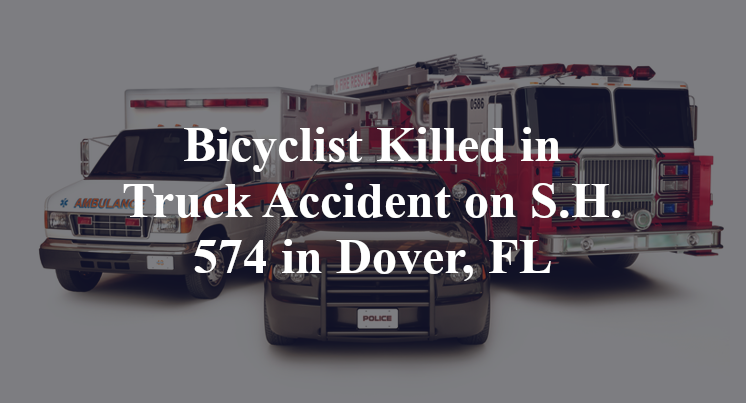Bicyclist Killed in Truck Accident on S.H. 574 in Dover, FL
Hillsborough County, FL — May 6, 2025, a man was killed in a bicycle versus truck accident shortly before 1:00 p.m. along State Highway 574.
According to authorities, a 37-year-old man was traveling on a northbound bicycle on Sydney Dover Road at the U.S. 574 intersection when the accident took place.

Officials indicate that, for reasons yet to be confirmed, the bicycle was struck by an 18-wheeler that had been traveling eastbound on the highway. The bicyclist reportedly suffered fatal injuries as a result of the wreck and was declared deceased at the scene. Additional details pertaining to this incident—including the identity of the victim—are not available at this point in time. The investigation is currently ongoing.
Commentary by Attorney Michael Grossman
When a bicyclist is killed in a collision with an 18-wheeler at an intersection, the core legal question is one of right-of-way and driver awareness. These crashes often happen in a matter of seconds, but the consequences are irreversible. And in my experience, when a cyclist ends up dead and a commercial truck is involved, it’s not enough to say it was an “accident.” It’s important to look at how the crash unfolded and what decisions—by the driver, the company, or both—may have allowed it to happen.
At a minimum, truck drivers are expected to approach intersections with caution, especially in areas where cyclists are known to travel. That means scanning side roads, watching for cross traffic, and yielding where required. If the truck had a green light and the cyclist didn’t, that would weigh heavily in the legal analysis—but if the cyclist had the right-of-way and the truck continued through without yielding, that’s a very different story. That’s why traffic signal data, dashcam footage, and eyewitness accounts are essential in a case like this.
Another issue that needs careful attention is visibility. Was the cyclist in a clearly marked crossing zone or shoulder? Was there anything obstructing the truck driver’s view? And just as importantly—was the truck equipped with mirrors and safety devices that would have helped the driver see someone approaching from a side road? Even in broad daylight, large commercial trucks have blind spots that can obscure vulnerable road users unless the driver takes active steps to look for them.
And because this was an 18-wheeler, the company operating it is part of the equation. Did they assign the driver a route that passed through cyclist-heavy intersections like this one? Did they provide adequate training on how to approach intersections and watch for people outside of cars? I’ve seen cases where companies put drivers on delivery schedules that discourage slowing down or cause them to cut corners just to stay on time. When that pressure contributes to a fatal mistake, it’s not just the driver who’s responsible—it’s the system they were working under.
Getting to the bottom of a crash like this means asking the right questions and refusing to stop at surface-level explanations. Serious wrecks deserve serious investigation, not assumptions. Understanding who had the right-of-way, whether the truck driver was alert and prepared, and whether the company supported safe driving practices is key to figuring out what might have happened. Getting clear answers to these questions is the least that can be done to help those affected find the clarity and closure they deserve.

“These are essential reads for anyone dealing with the aftermath of a truck wreck”– Attorney Cory Carlson